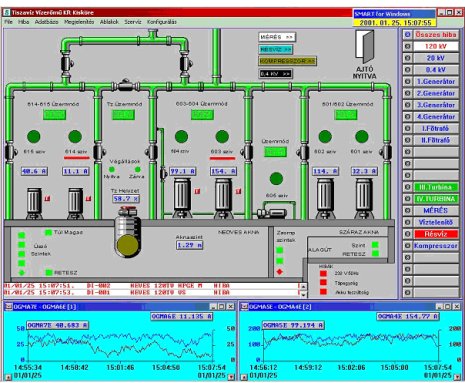In 1988, an Energy Management System (EMS) was installed at the MOL-TISZA Oil Refinery in Hungary. The EMS was responsible for overall refinery energy management, which included the electrical, steam, fuel gas, industrial water, waste water, nitrogen, air, and energy storage systems. The EMS was based on a distributed network of RTUs, a SCADA master station, and connected terminals for operators.
Like many other systems of the era, the EMS had to be revamped due to Y2K issues. Hence, in October, 1999 ITO Engineering LLC, a Hungarian system integrator company, was commissioned to supply and implement the new system. ITO Engineering banked on OPC to save them a significant integration effort.

ITO Engineering replaced the aging RTUs with new PLCs in an effort to build an Ethernet based Windows NT network. They also selected SMART for Windows with 9 EMS operator terminals, as the new SCADA master. One of SMART's features was that it already had an OPC client. Since the plant wanted to obtain all the process parameters directly from process units, which were equipped by a Fisher-Rosemount RS3 DCS, ITO Engineering implemented Matrikon's OPC Server for Fisher-Rosemount RS3 RNI. The SMART SCADA master (with the OPC client) and the Matrikon's OPC server were installed on two different computers, to improve system stability, and were linked by OPC over DCOM.
"Matrikon's OPC server installed rather easily," said Peter Salz, project manager at ITO. "Our alternatives were to either use DDE or to develop our own interface, but existing software grea